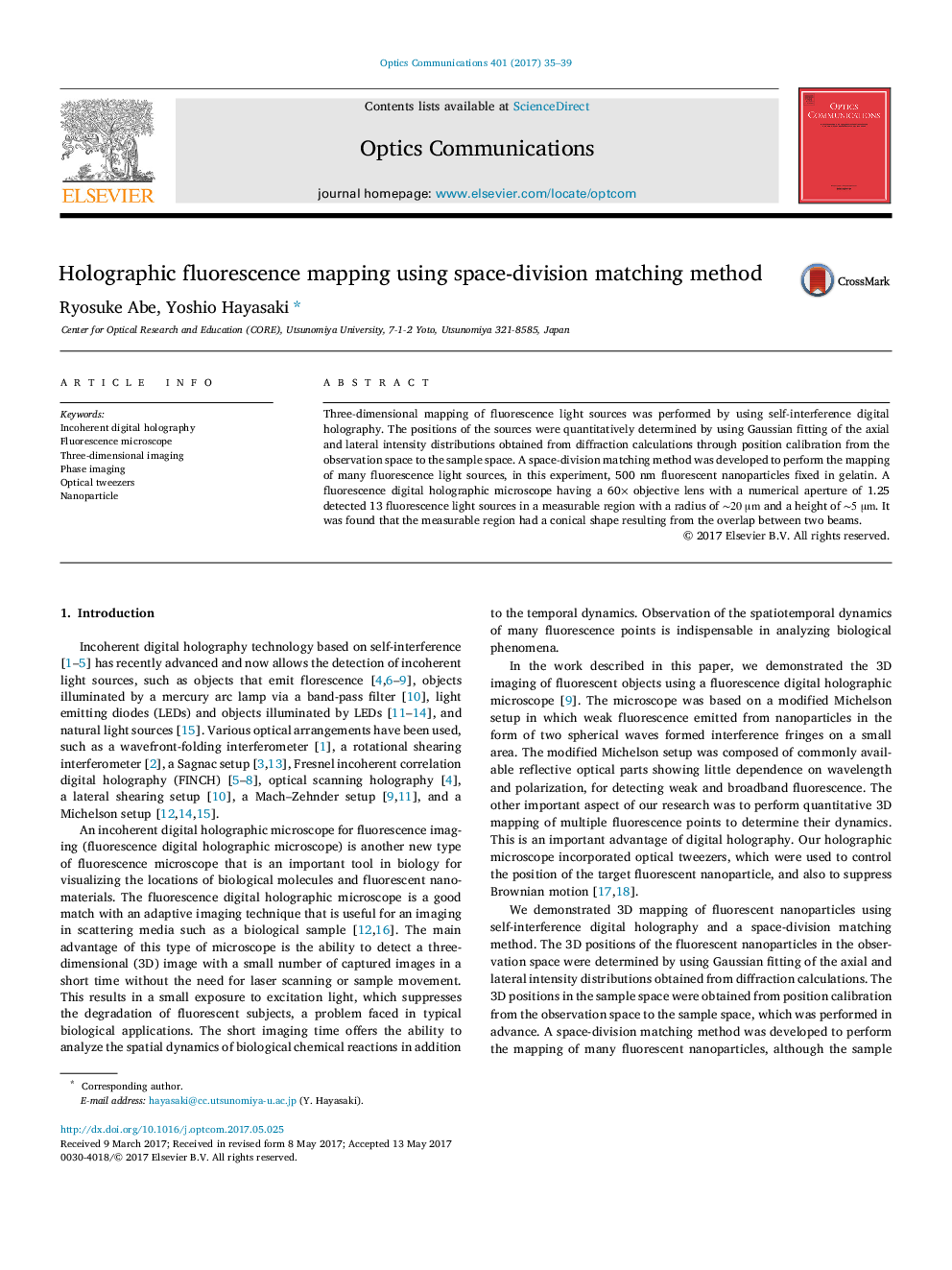| Article ID | Journal | Published Year | Pages | File Type |
|---|---|---|---|---|
| 5449302 | Optics Communications | 2017 | 5 Pages |
Abstract
Three-dimensional mapping of fluorescence light sources was performed by using self-interference digital holography. The positions of the sources were quantitatively determined by using Gaussian fitting of the axial and lateral intensity distributions obtained from diffraction calculations through position calibration from the observation space to the sample space. A space-division matching method was developed to perform the mapping of many fluorescence light sources, in this experiment, 500 nm fluorescent nanoparticles fixed in gelatin. A fluorescence digital holographic microscope having a 60àobjective lens with a numerical aperture of 1.25 detected 13 fluorescence light sources in a measurable region with a radius of â¼20μm and a height of â¼5μm. It was found that the measurable region had a conical shape resulting from the overlap between two beams.
Related Topics
Physical Sciences and Engineering
Materials Science
Electronic, Optical and Magnetic Materials
Authors
Ryosuke Abe, Yoshio Hayasaki,
